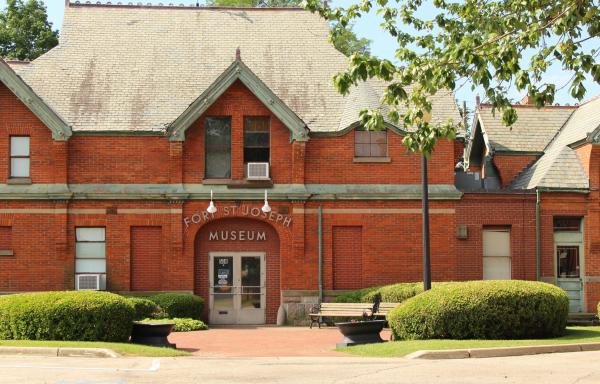Niles History Center

Tel: 269-845-4054
The Niles History Center is the Fort St. Joseph Museum and Chapin Mansion, both located at 508 E. Main Street in beautiful downtown Niles, Michigan. Henry and Ruby Chapin constructed their magnificent home in 1882. Donated to the City of Niles in 1933, it served as City Hall and is now administered by the Niles History Center. The Chapin Mansion serves as one of the nation’s finest examples of the American Aesthetic style.Ornate stained glass windows, beveled mirrors, impressive brass chandeliers, beautiful hand-carved woodwork and nine fireplaceswill transport you back to this ornate period of the 1880s. Tours of the Chapin Mansion are led by trained docents and allow visitors an inside look into this beloved Niles landmark.
The Fort St. Joseph Museum is located in the former carriage house of the Victorian period Chapin Mansion and features exhibits that tell the story of Niles from the prehistoric era through the 1691 founding of Fort St. Joseph to the modern businesses and industrial era. Special artifacts highlighted throughout the exhibits include discoveries made through the Fort St. Joseph Archaeological Project, Ice Age fossils, pictographs drawn by Chief Sitting Bull, railroad memorabilia and more! Interactive elements offer an engaging learning environment for children. The Fort St. Joseph Museum also offers educational programs for all ages, including field trips, group tours, family programs, walking tours of the city’s downtown historic district, plus more!
Please read below for wheelchair accessible information:
Fort St. Joseph Museum: The Fort St. Joseph features exhibits located on two levels. Because the Museum is housed in a historic building built in 1882, the second floor gallery space is not fully accessible to all persons with disabilities. Digital representations of these exhibits are available.
Chapin Mansion: The Chapin Mansion is a multi-story building constructed in 1882, and as a result is not fully accessible to all persons with disabilities. Digital representations of these non-accessible floors are available.
Only service animals are allowed in the museums.
Contact: email





